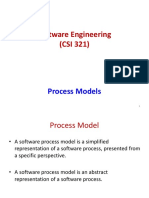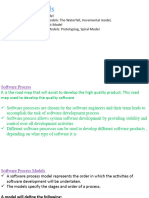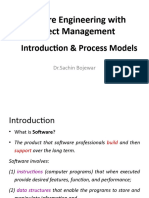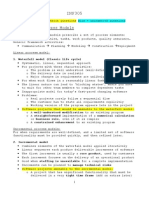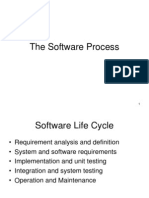0% found this document useful (0 votes)
19 views43 pagesUnit 1
The document discusses different software development life cycle models including waterfall, incremental, spiral and prototyping models. It provides details about each model including their process, advantages and disadvantages. The key models covered are waterfall, incremental and spiral.
Uploaded by
mian19234Copyright
© © All Rights Reserved
We take content rights seriously. If you suspect this is your content, claim it here.
Available Formats
Download as PDF, TXT or read online on Scribd
0% found this document useful (0 votes)
19 views43 pagesUnit 1
The document discusses different software development life cycle models including waterfall, incremental, spiral and prototyping models. It provides details about each model including their process, advantages and disadvantages. The key models covered are waterfall, incremental and spiral.
Uploaded by
mian19234Copyright
© © All Rights Reserved
We take content rights seriously. If you suspect this is your content, claim it here.
Available Formats
Download as PDF, TXT or read online on Scribd
/ 43



